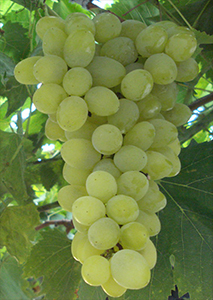 DELIVERY FROM £4.95
DELIVERY FROM £4.95 FREE DELIVERY FOR ORDERS OVER £100
FREE DELIVERY FOR ORDERS OVER £100Home » Community » Wine and Grape Guide » Perera

The Perera grape, locally known in the Valdobbiadene area as “Pevarise,” is a rare and historic white grape variety that once played a starring role in the rolling hills of Italy’s Prosecco-producing heartland. Particularly abundant in the prized sub-zones of Santo Stefano and San Pietro di Barbozza, Perera was historically sought after for the exceptional quality and distinctive flavour of its berries.
The grape’s name is thought to derive from its subtle pear-like taste (“pera” in Italian) found in the juicy pulp, or possibly from the berry’s unique shape, which resembles an inverted pear. This sensory profile made Perera a favourite among local growers and winemakers, valued for both its character and its ability to bring aromatic complexity to the wines of the region.
Perera’s story mirrors that of many European grape varieties. The arrival of the phylloxera plague in the late 19th century devastated vineyards across the Veneto, and Perera was particularly susceptible. Its vines were so severely affected that the variety nearly vanished from cultivation.For decades, Perera remained a footnote in viticultural history - until it was gradually rediscovered by passionate local winemakers who recognised its potential in high-quality sparkling wine production. Today, it is still considered a rare variety, but its revival has been driven by its role in the DOC and DOCG Prosecco appellations, where it is typically blended with Glera (the main Prosecco grape) and Verdiso to enhance aroma, texture, and flavour complexity.
Perera is a white-berried variety with medium-sized, spherical grapes covered in a waxy bloom. The berries are yellow-golden at full ripeness, developing a warm glow in the vineyard’s late summer sun. Clusters are medium to large, conical or pyramidal in shape, often with one or two small wings. They are moderately compact, housing a pentagonal, three-lobed leaf of medium-to-large size.
The Perera vine exhibits considerable vigour and has a late ripening cycle, making it well-suited to the cool autumn nights of the Prosecco hills. However, it is sensitive to millerandage (irregular berry development), which can make its yields less predictable. This irregular production has historically made it more challenging for growers to maintain, further contributing to its rarity today.
When vinified, the Perera grape produces wines of straw-yellow colour with golden highlights, a vibrant and inviting appearance that hints at its aromatic depth. The nose is intensely fruity and expressive, often showing notes of pear, apple, and delicate floral tones. On the palate, Perera is full-bodied yet harmonious, with a rounded mouthfeel and a persistent fruity finish. In Prosecco blends, Perera’s role is to lift aromatics and add fruit-forward richness, balancing the freshness of Verdiso and the delicate floral elegance of Glera. Its influence is subtle but significant, contributing to the layered complexity that defines some of the finest DOC and DOCG Proseccos.



Before we say ciao, why not join our newsletter & stay up to date on everything happening on planet Italyabroad.com